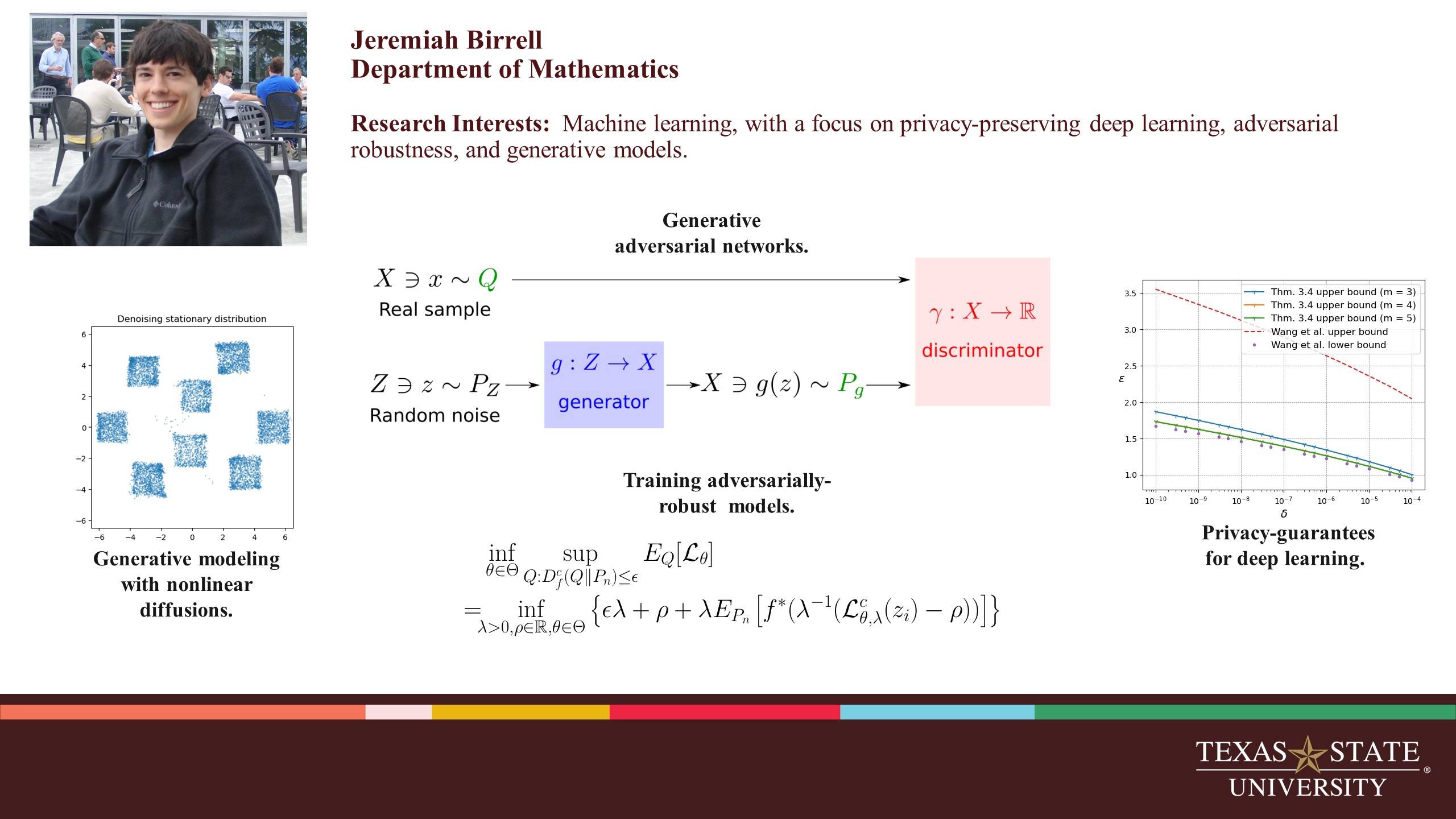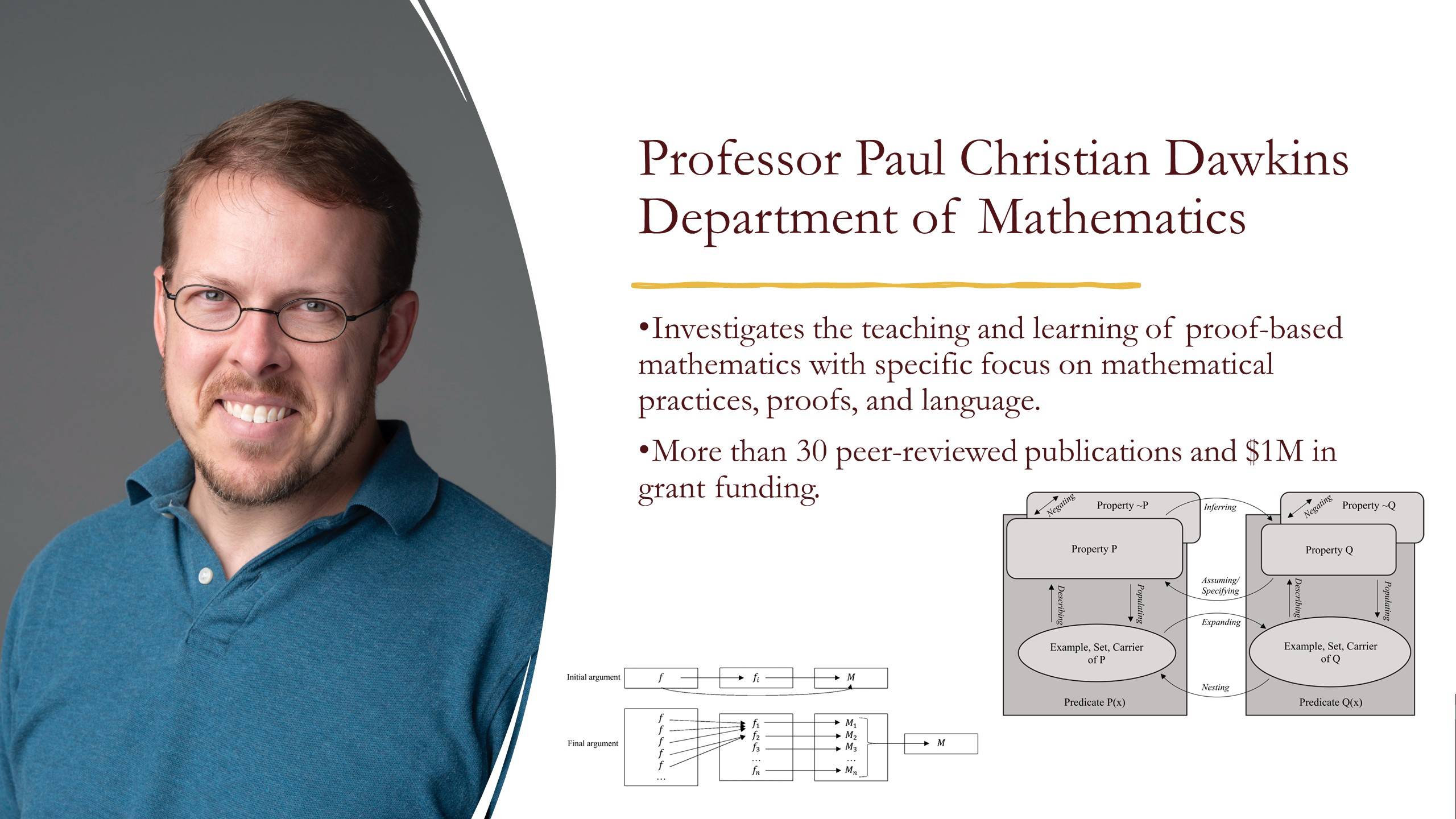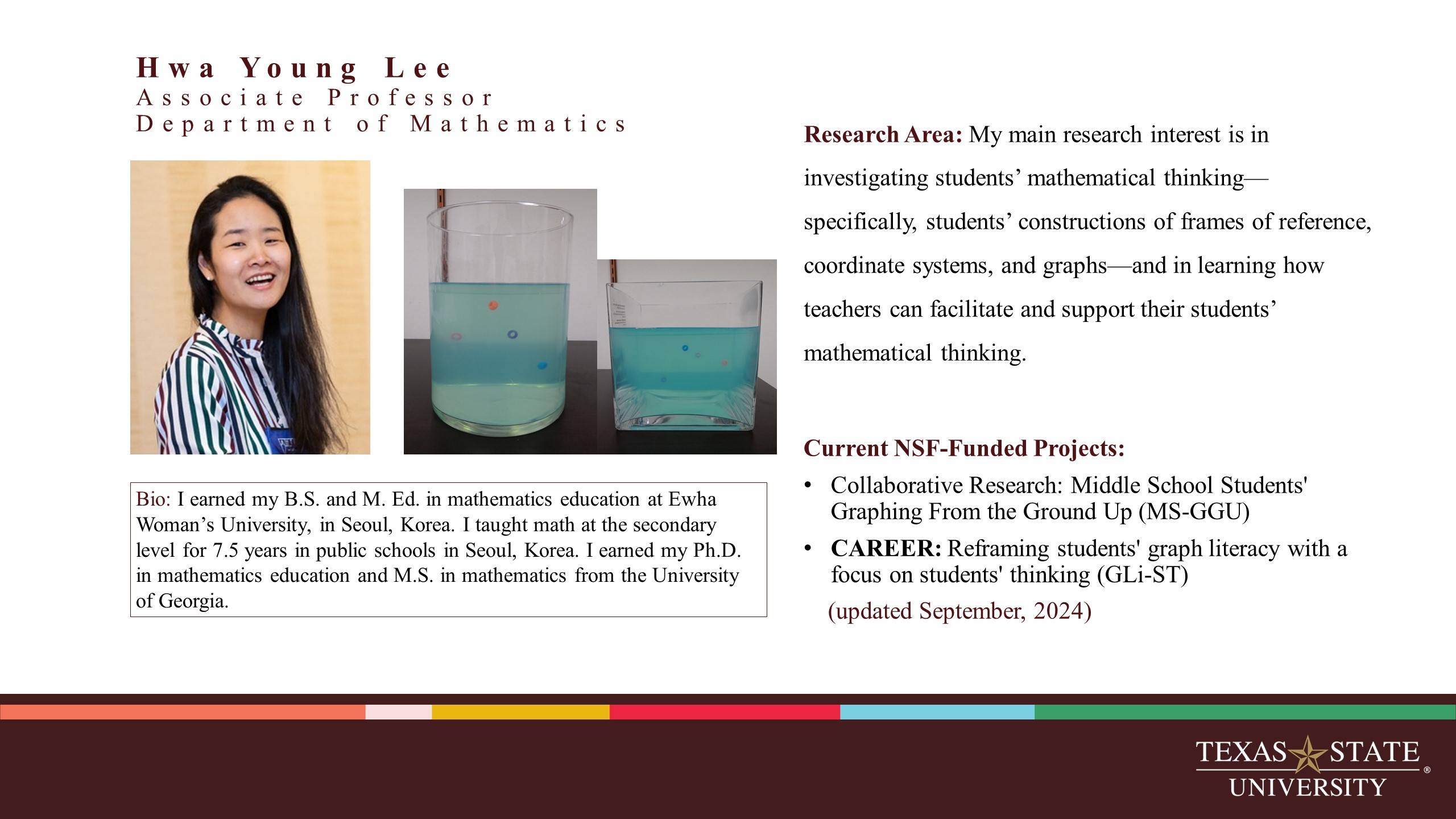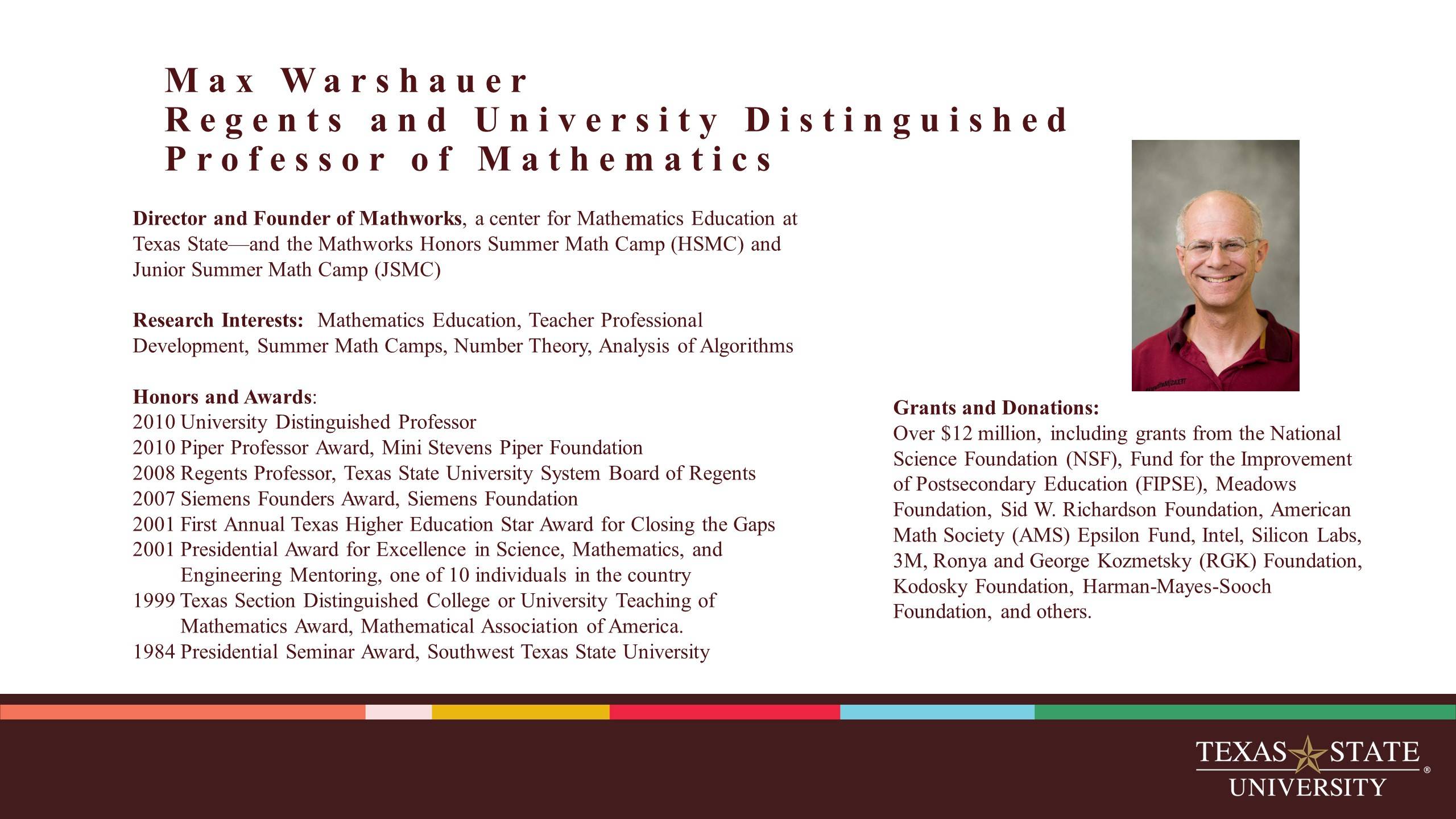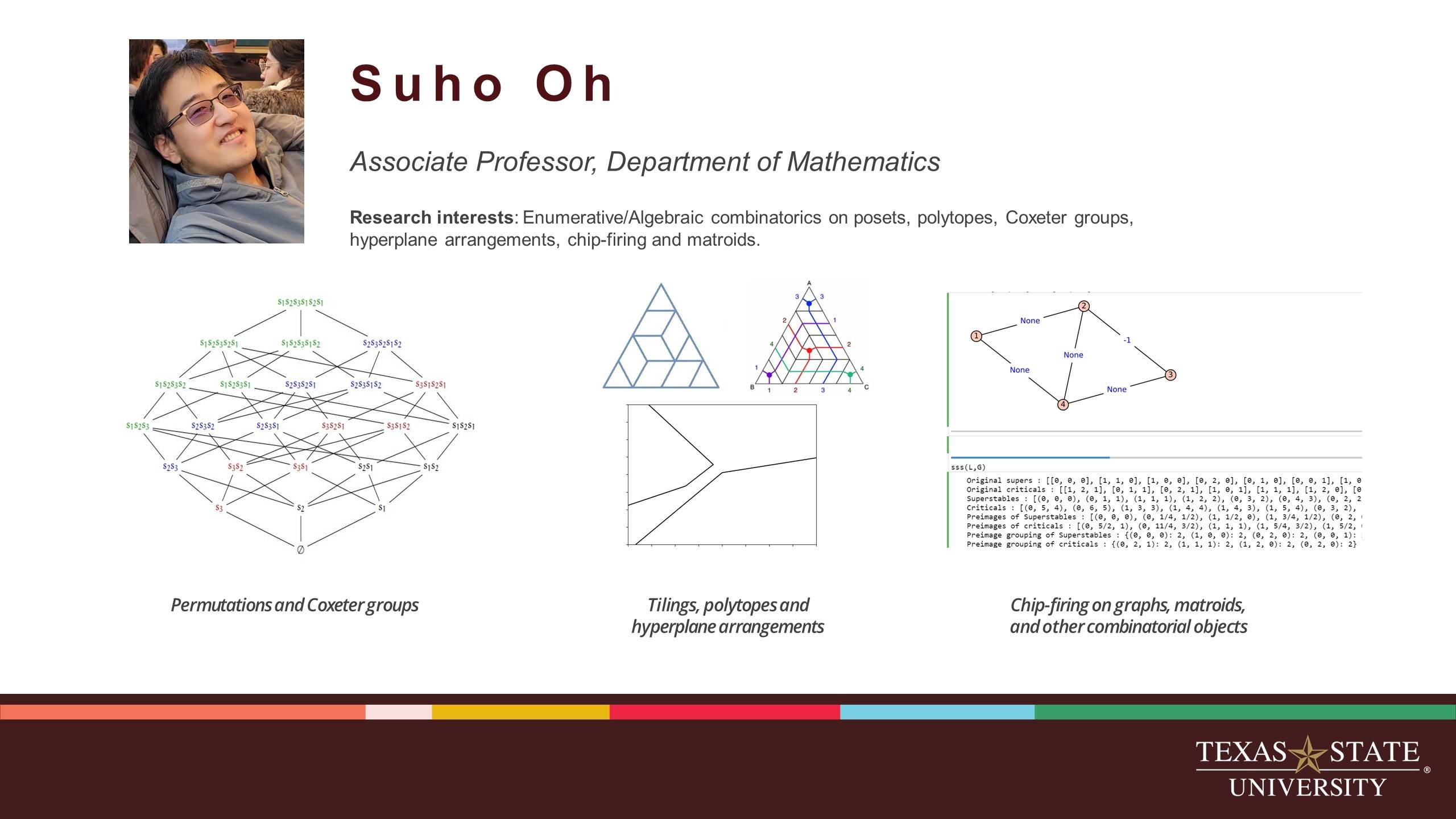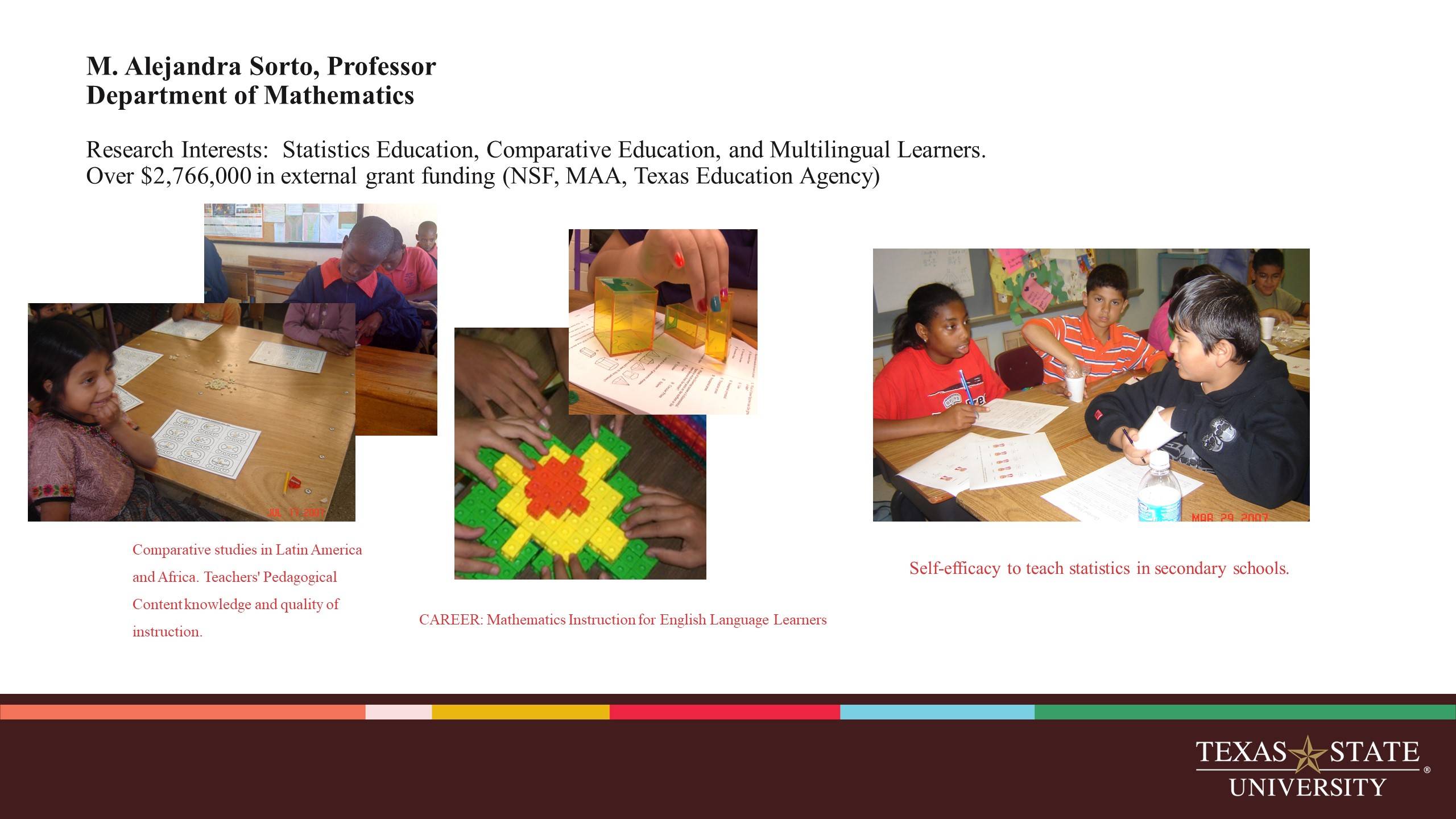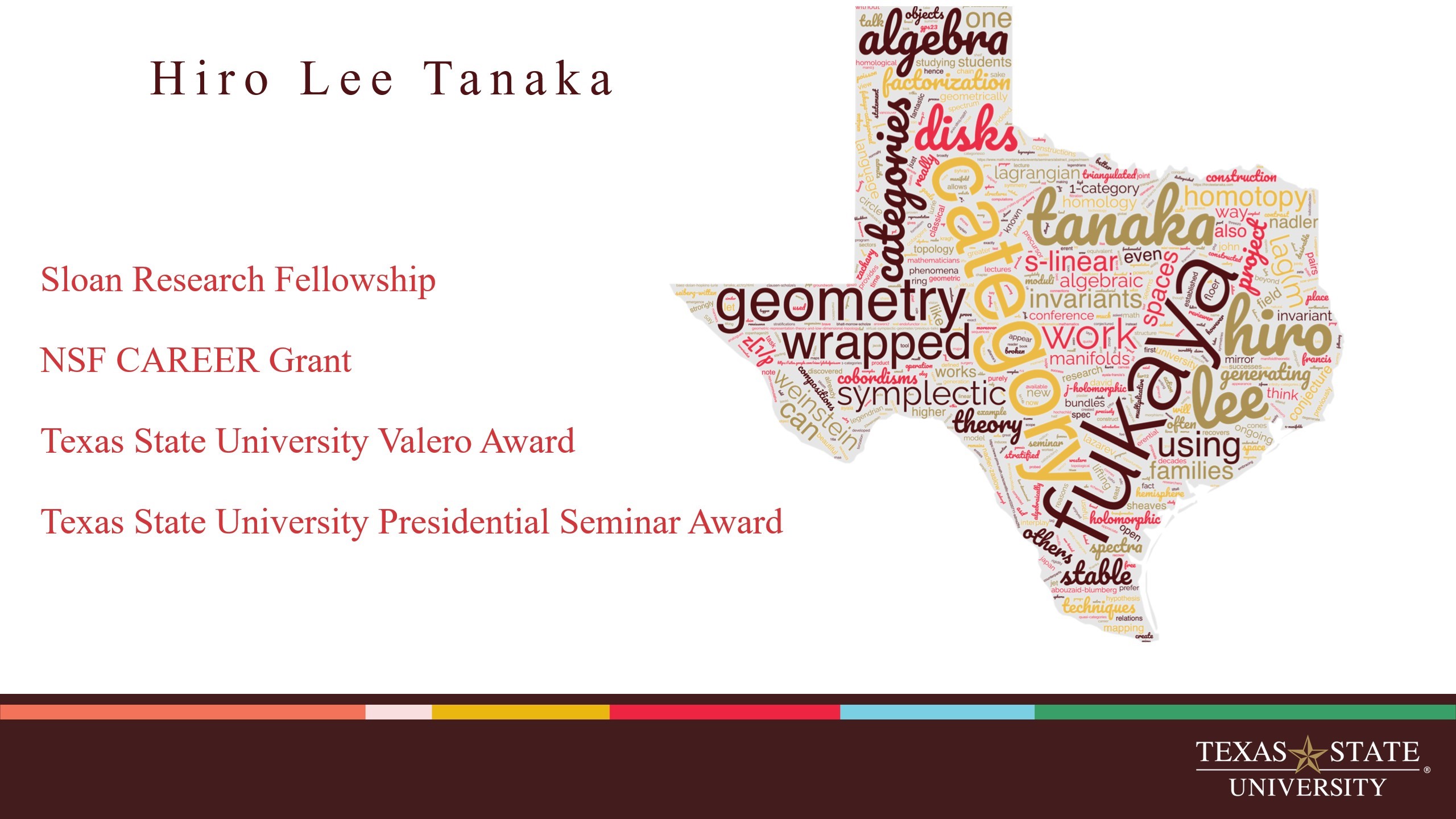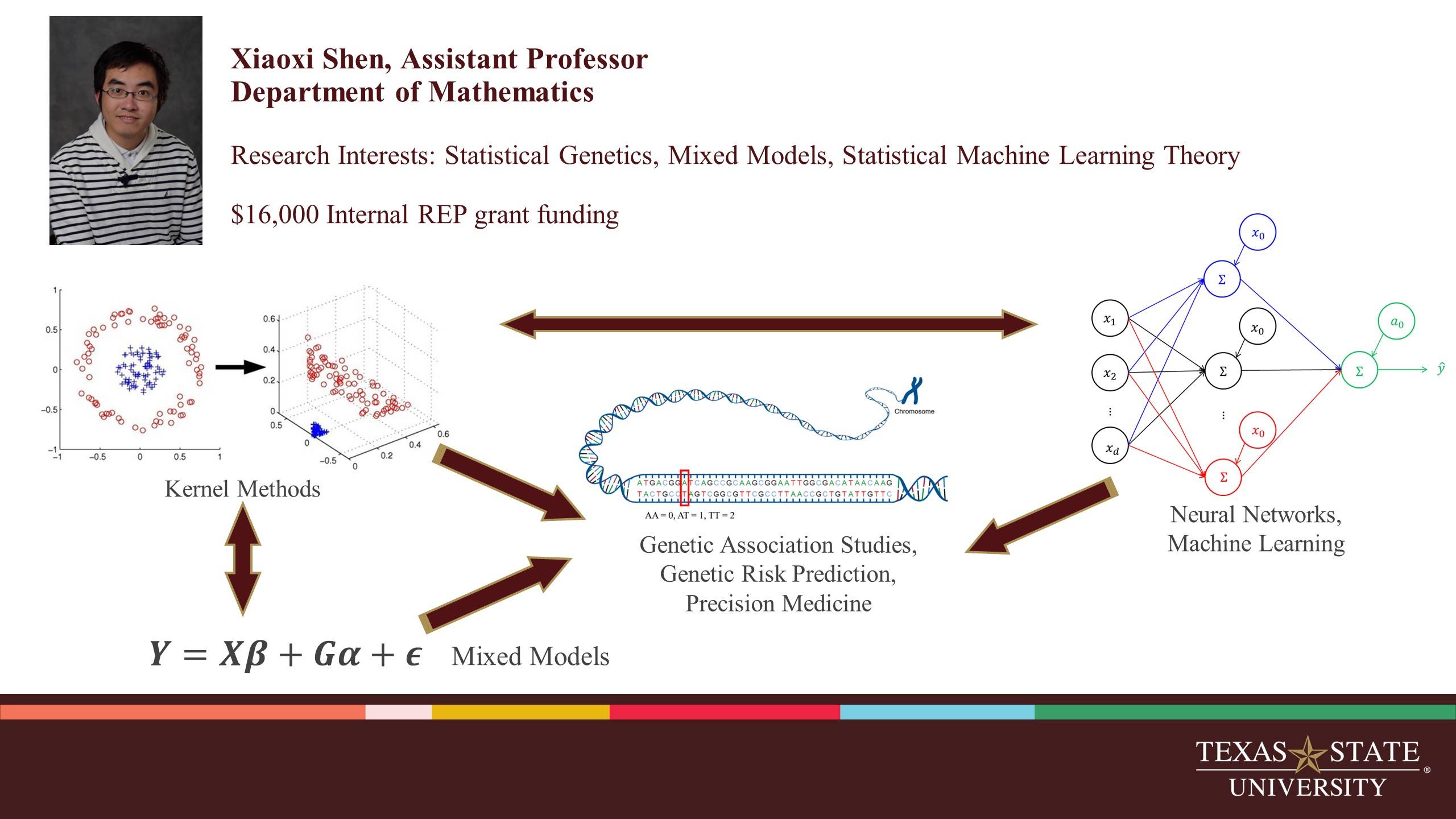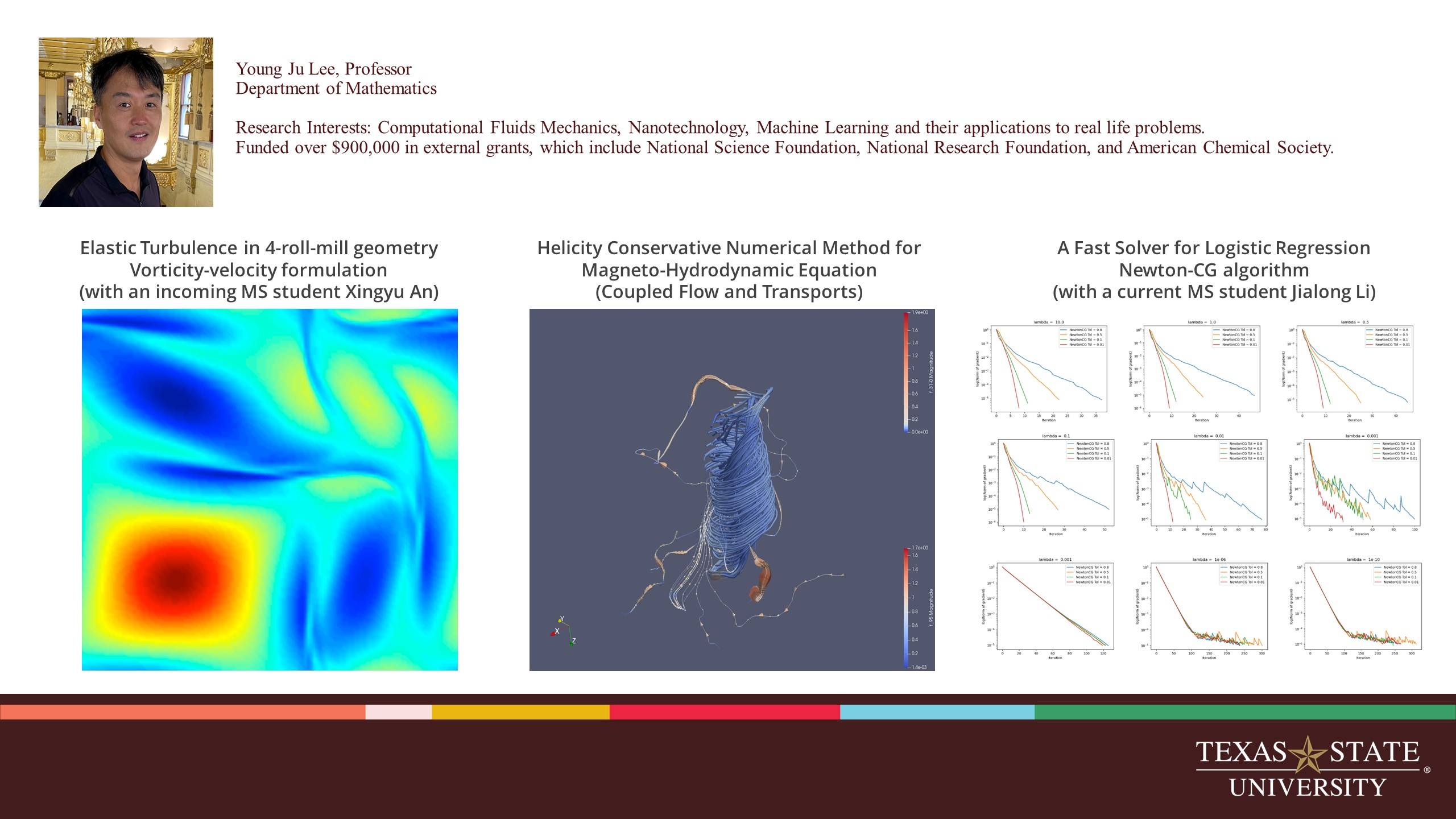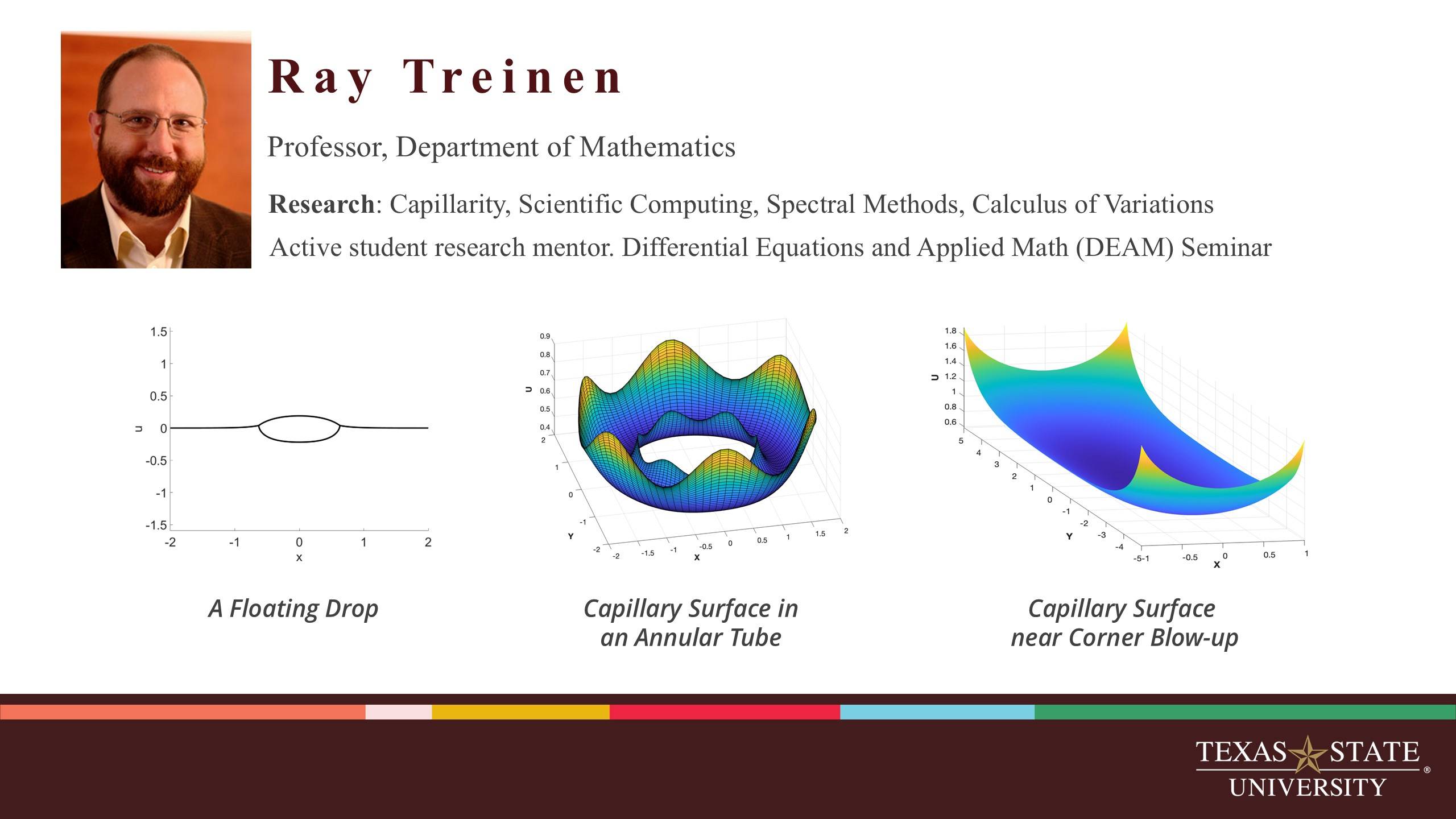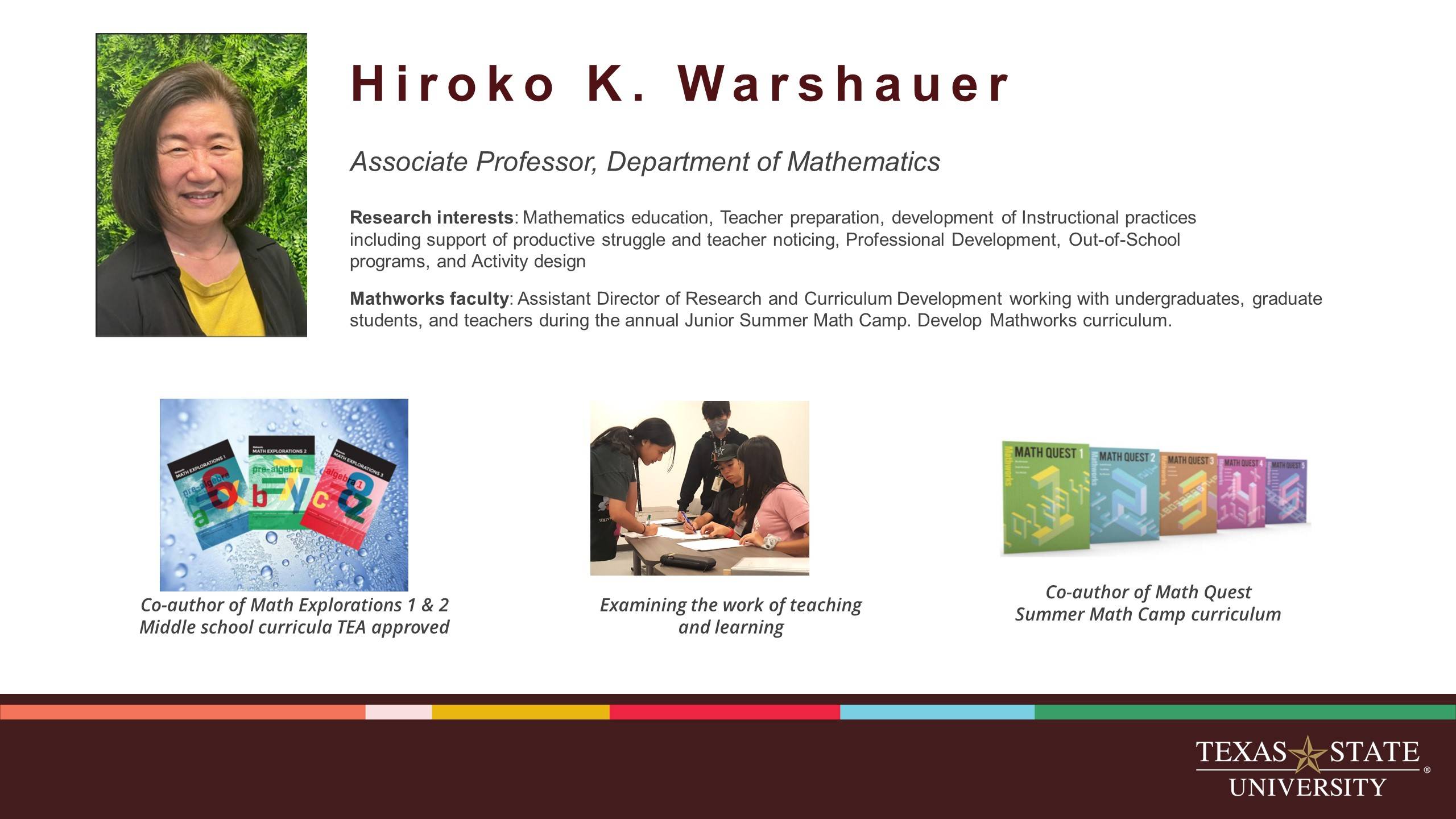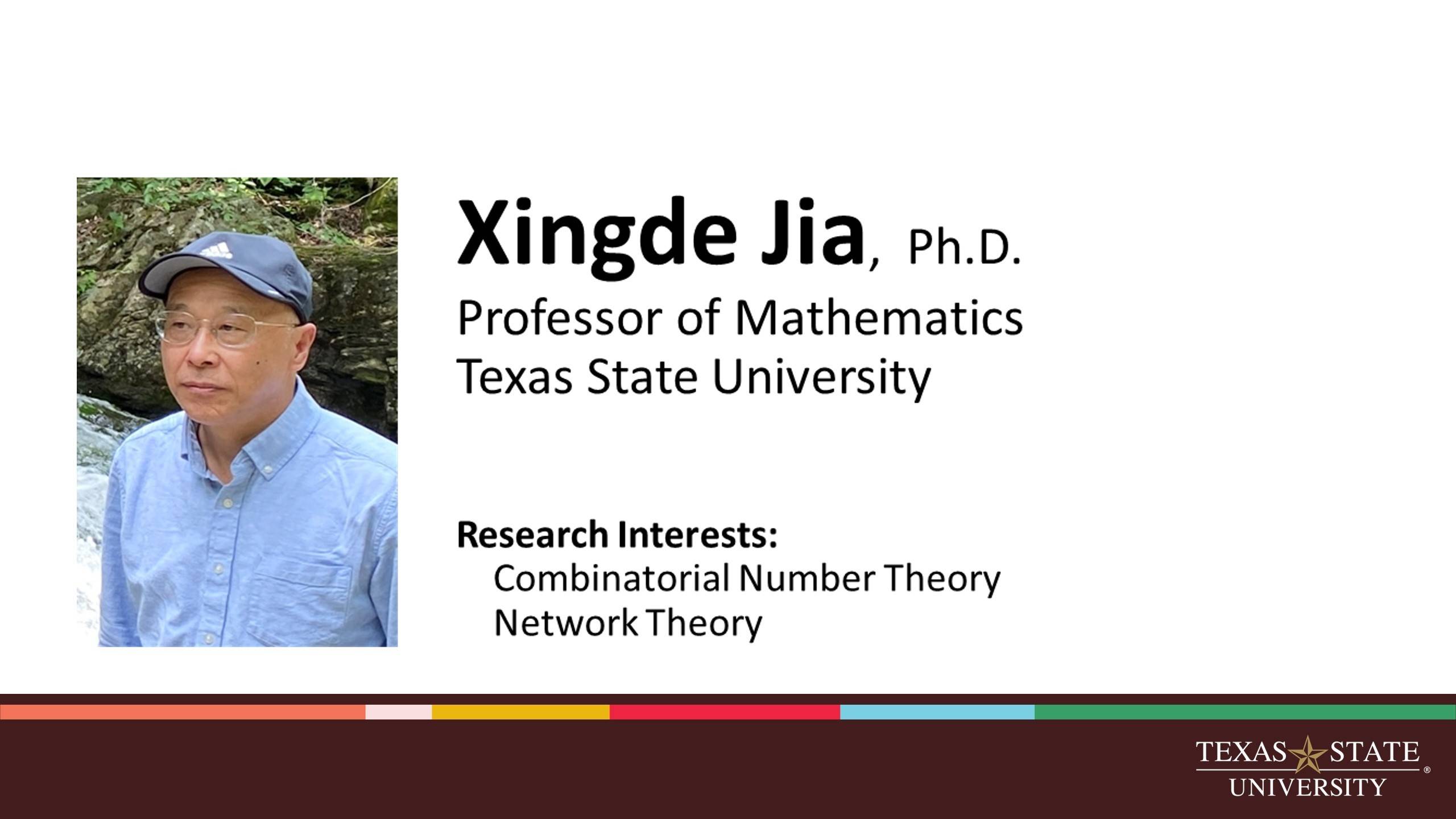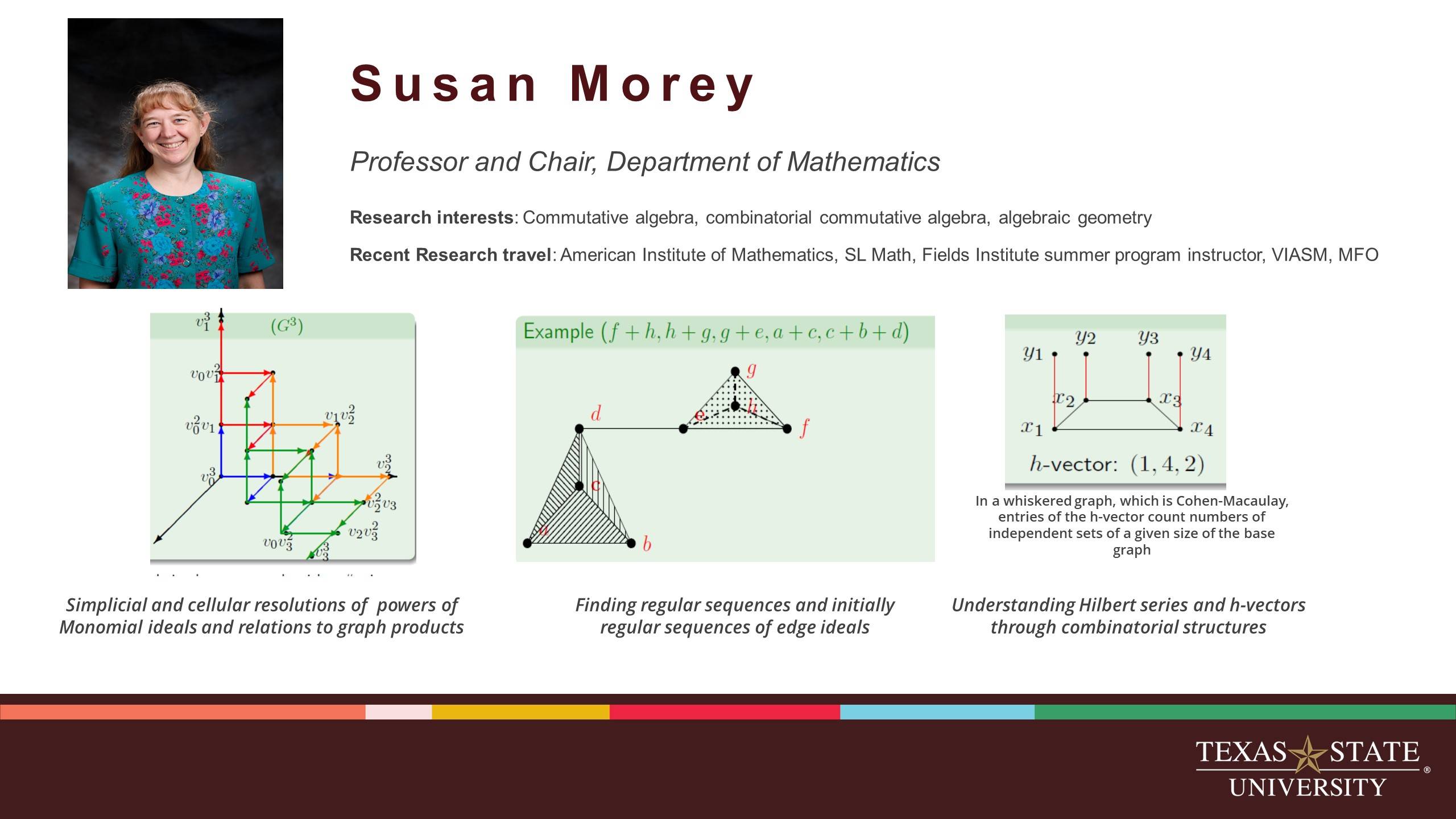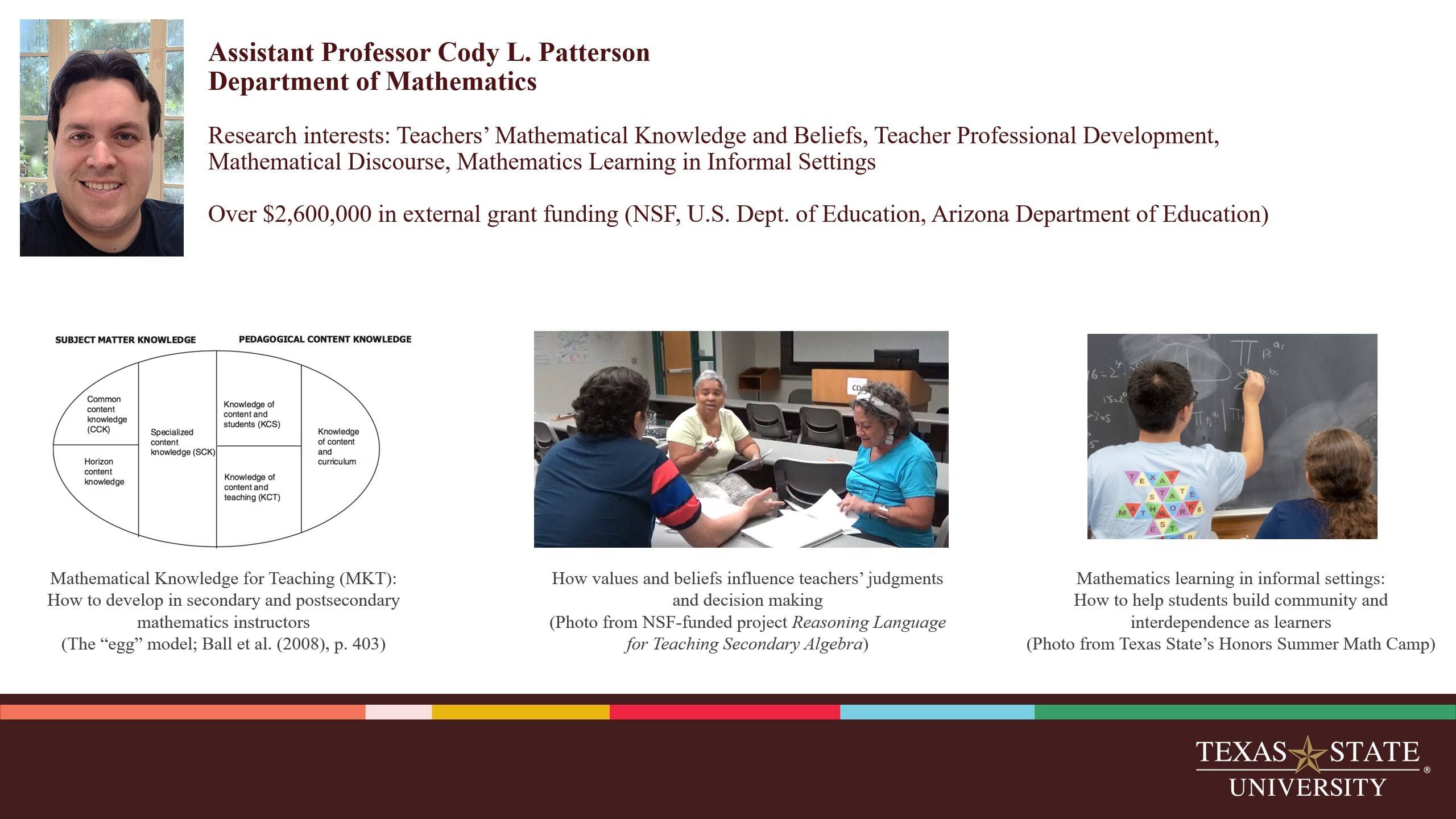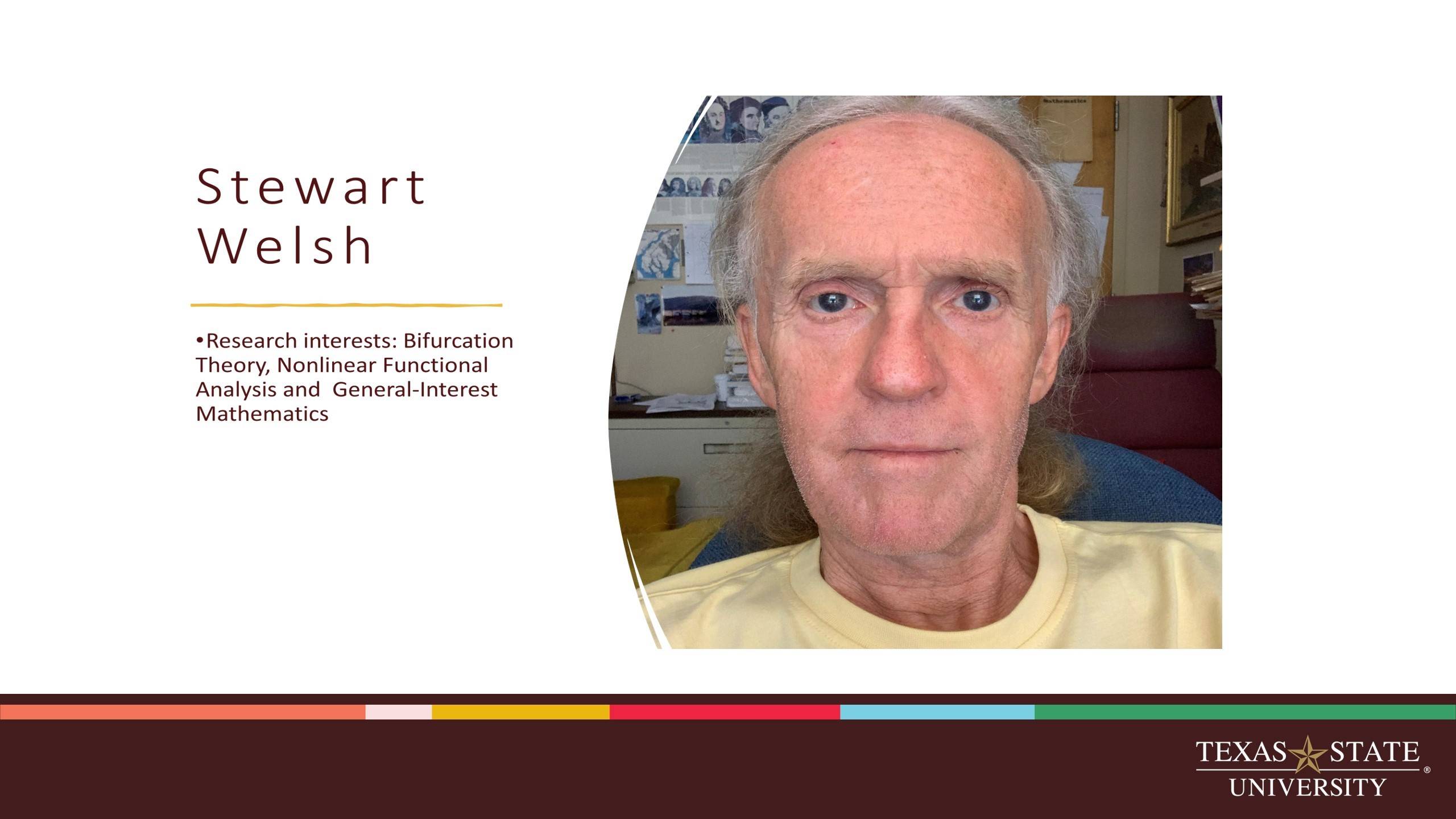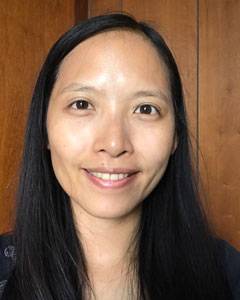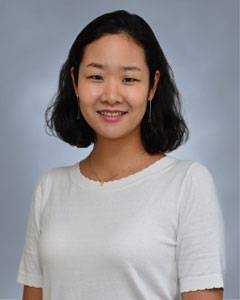We proudly celebrate the outstanding accomplishments of our newest graduates. This year’s class has demonstrated exceptional perseverance, intellectual curiosity, and a deep commitment to advancing mathematical understanding.
CONGRATULATIONS GRADUATES!

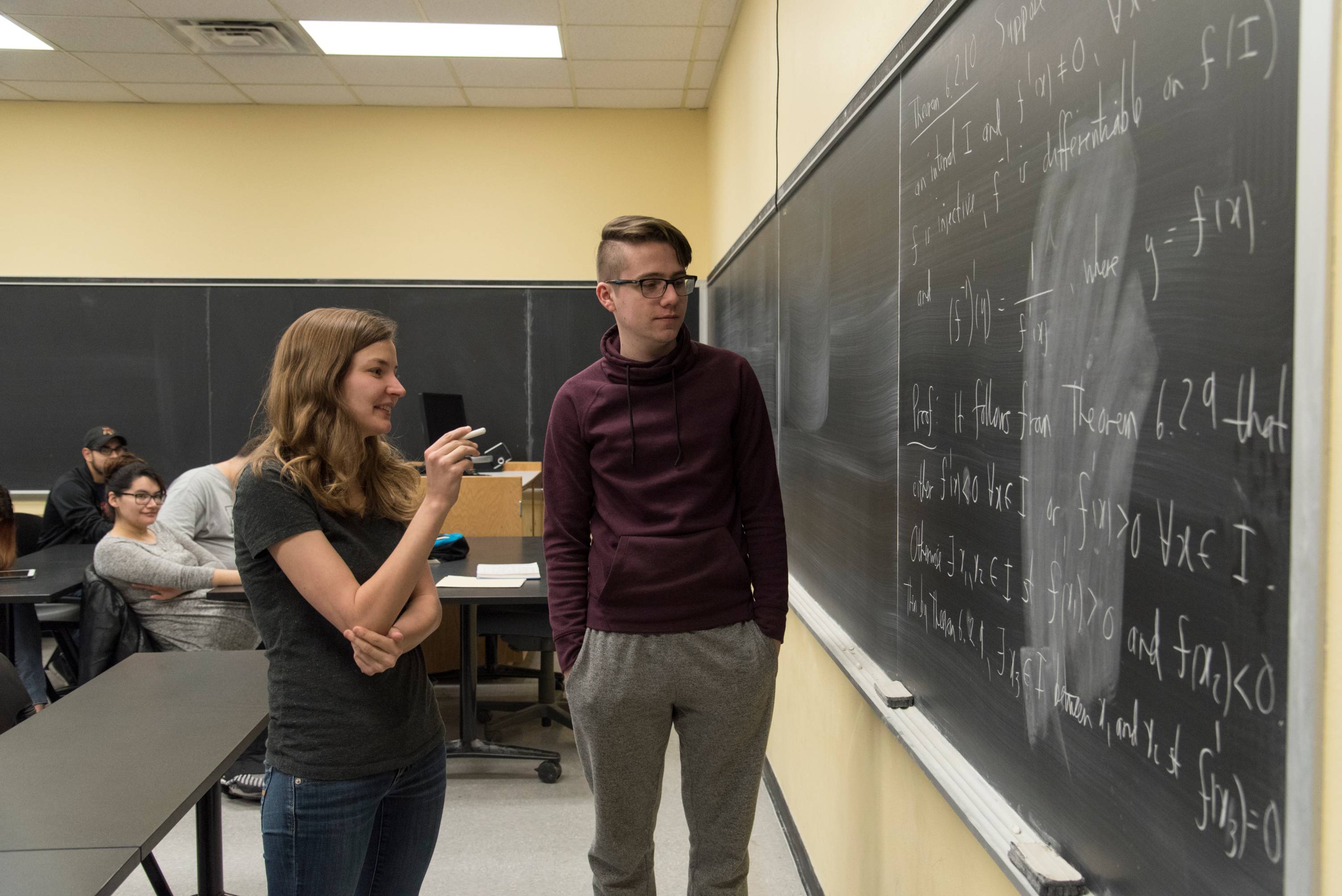
Student Focused
We have a wide offering of general education courses designed to prepare you to major in Business and STEM (Science, Technology, Engineering, and Mathematics) fields.
In Active Grants
Discover our dynamic faculty and the innovative research they’re driving through, high-impact grant awards.
NEXT in Math

Promotion from Assistant Professor to Associate Professor & Tenure
Hiroaki Tanaka

Promotion from Associate Professor to Professor
Kathleen Melhuish and Hiroko Warshauer

Dr. Susan Morey Receives the University Distinguished Professor Award
This award honors individuals whose performance in teaching, research, and service has been exemplary and recognized at the state, national, and international levels.
@TXST Math
No results.

